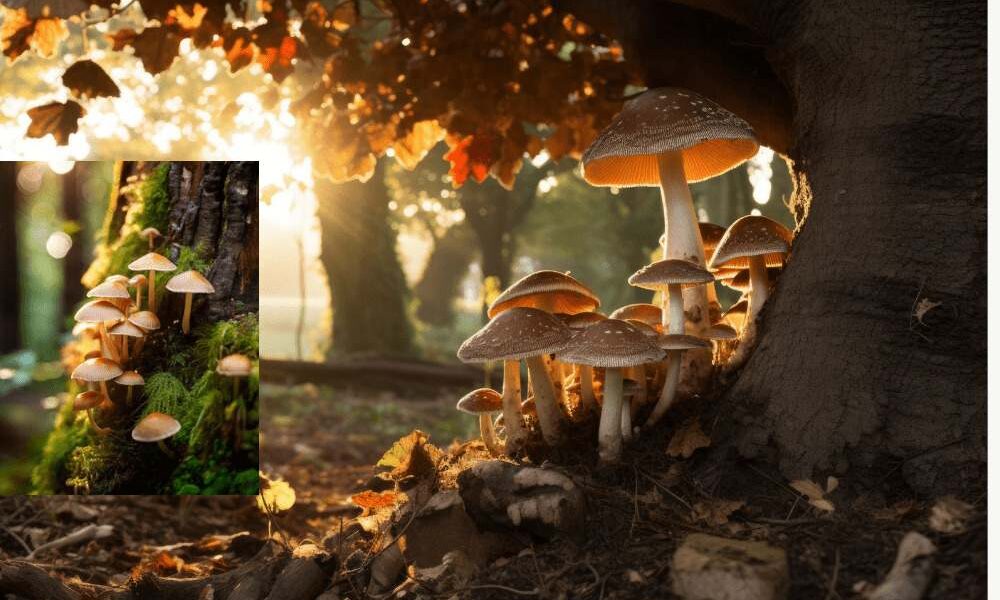Mushrooms are fascinating organisms that play a crucial role in our ecosystems. They are not only essential for nutrient cycling and decomposition but also offer a variety of culinary delights. This guide will focus on mushrooms that grow on trees, exploring their types, growth processes, and how you can cultivate them yourself.
Understanding Mushrooms and Their Growth
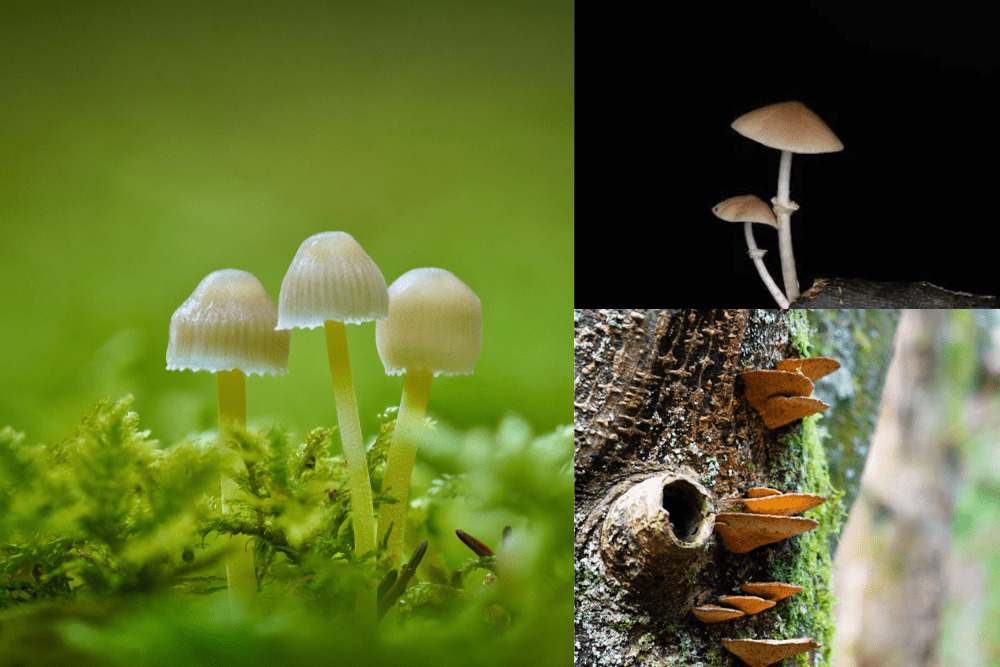
What Are Mushrooms?
Mushrooms are the fruiting bodies of fungi, which belong to a kingdom of life distinct from plants and animals. They reproduce through spores, which can be found in the gills or pores of the mushroom.
Biological Classification: Mushrooms are classified under the kingdom Fungi, which includes various species ranging from edible to toxic varieties.
Role in Ecosystems: Mushrooms play a vital role in decomposition, breaking down organic matter, and recycling nutrients into the soil. This process is essential for maintaining healthy ecosystems.
Why Do Mushrooms Grow on Trees?
Mushrooms thrive in specific conditions, and trees provide an ideal environment for many species.
Fungal Growth Conditions: Factors such as humidity, temperature, and the availability of nutrients are crucial for fungal growth. Trees offer a moist habitat and a rich source of organic material.
Symbiosis vs. Parasitism: Some mushrooms form symbiotic relationships with trees, exchanging nutrients for sugars. Others may act as parasites, feeding off the tree and potentially harming it. Understanding these relationships is key to successful mushroom cultivation.
Types of Mushrooms That Grow on Trees

Cap Fungi
Cap fungi are the most recognizable type of mushrooms. They have a distinct cap and stem structure.
- Oyster Mushrooms: Known for their delicate flavor and texture, they grow on decaying wood and are easy to cultivate.
- Shiitake Mushrooms: These mushrooms are prized for their rich taste and are often grown on hardwood logs.
Shelf or Bracket Fungi
Shelf fungi, also known as bracket fungi, grow on the sides of trees and have a shelf-like appearance.
- Chicken of the Woods: This vibrant orange fungus is visually striking and delicious when cooked.
- Turkey Tail: Recognized for its colorful, fan-shaped appearance, the it is often used in traditional medicine.
Other Notable Types
- Enokitake: These small, delicate mushrooms grow in clusters and are commonly used in Asian cuisine.
- Maitake: Also known as “Hen of the Woods,” maitake mushrooms have a unique flavor and are often found at the base of trees.
Identifying Edible vs. Poisonous Mushrooms

Common Edible Mushrooms
Identifying edible mushrooms is crucial for safe foraging. Here are some tips:
- Look for Distinct Features: Pay attention to color, shape, and size. Edible mushrooms often have specific characteristics that set them apart.
- Use Field Guides: Invest in a good mushroom identification guide to help you recognize safe varieties.
Toxic Look-Alikes
Some edible mushrooms have poisonous counterparts. Here are a few examples:
- Death Cap: This highly toxic mushroom resembles edible varieties but has a greenish cap.
- False Morel: While true morels are delicious, false morels can be deadly. They often have irregular shapes and a lobed appearance.
Safety Precautions for Foraging
When foraging for mushrooms, always follow these safety tips:
- Never Eat Unidentified Mushrooms: If you need clarification on a mushroom’s identity, it’s best to avoid consuming it.
- Consult Experts: Join local foraging groups or consult with experienced foragers to enhance your knowledge.
The Process of Growing Mushrooms on Trees

Choosing the Right Tree Species
Selecting the right tree species is essential for successful mushroom cultivation. Here are some of the best options:
- Oak: Known for its dense wood, oak is an excellent choice for growing shiitake and oyster mushrooms.
- Maple: Maple trees provide a good substrate for various mushroom species.
Preparing the Logs or Stumps
Preparing your logs or stumps is a crucial step in the cultivation process. Follow these steps:
- Select Fresh Logs: Choose logs that are freshly cut and free from disease.
- Cut to Size: Cut the logs into manageable lengths, typically around 3-4 feet.
- Drill Holes: Use a drill to create holes in the logs, spaced about 6 inches apart.
Inoculation Techniques
Vaccination is introducing mushroom spores or mycelium into the prepared logs. Here are some methods:
- Plug Spawn: Insert pre-inoculated wooden plugs into the drilled holes and seal them with wax.
- Grain Spawn: Spread grain spawn over the log surface and cover it with a breathable material.
Caring for Your Mushroom Cultivation

Environmental Conditions
Maintaining the right environmental conditions is vital for mushroom growth.
- Humidity: Aim for a humidity level of around 80-90%. You can achieve this by misting the logs regularly.
- Temperature: Most mushrooms prefer temperatures between 60-75°F (15-24°C).
- Light: While mushrooms don’t require direct sunlight, they benefit from indirect light.
Watering and Maintenance
Proper watering is essential for healthy mushroom growth. Here’s how to maintain moisture levels:
- Check Moisture Levels: Regularly check the logs for dryness. If they feel dry to the touch, it’s time to water.
- Avoid Overwatering: Too much water can lead to mold growth, so be cautious.
Monitoring Growth
Keep an eye on your mushroom logs for signs of healthy growth:
- Healthy Mycelium: Look for white, thread-like structures indicating active mycelium.
- Mushroom Pins: Small mushroom pins emerging from the logs indicate that your mushrooms are ready to grow.
Harvesting Your Mushrooms
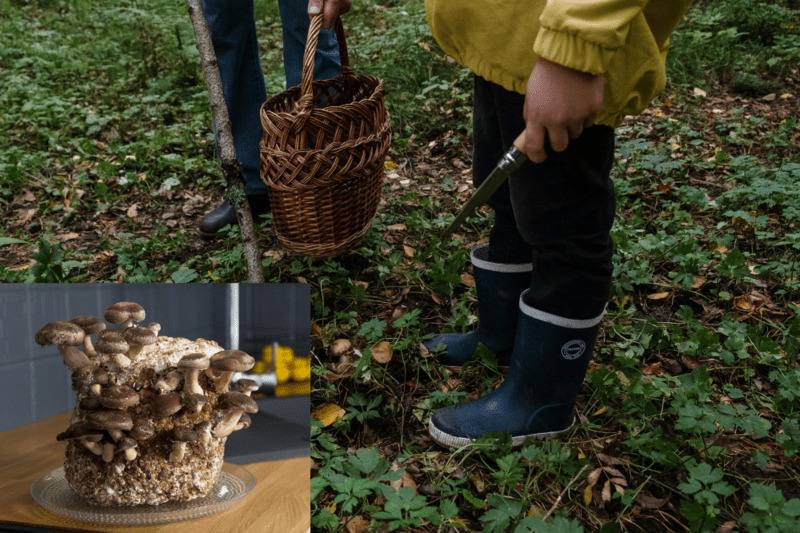
When to Harvest
Knowing when to harvest your mushrooms is crucial for optimal flavor and texture. Here are some indicators:
- Size: Harvest mushrooms when they reach full size but before wilt.
- Color: Look for vibrant colors; dull or faded mushrooms may be past their prime.
Harvesting Techniques
To avoid damaging the mycelium, follow these best practices:
- Use a Sharp Knife: Cut the mushrooms at the base, leaving the mycelium intact.
- Handle with Care: Gently place harvested mushrooms in a basket to prevent bruising.
Common Challenges in Mushroom Cultivation
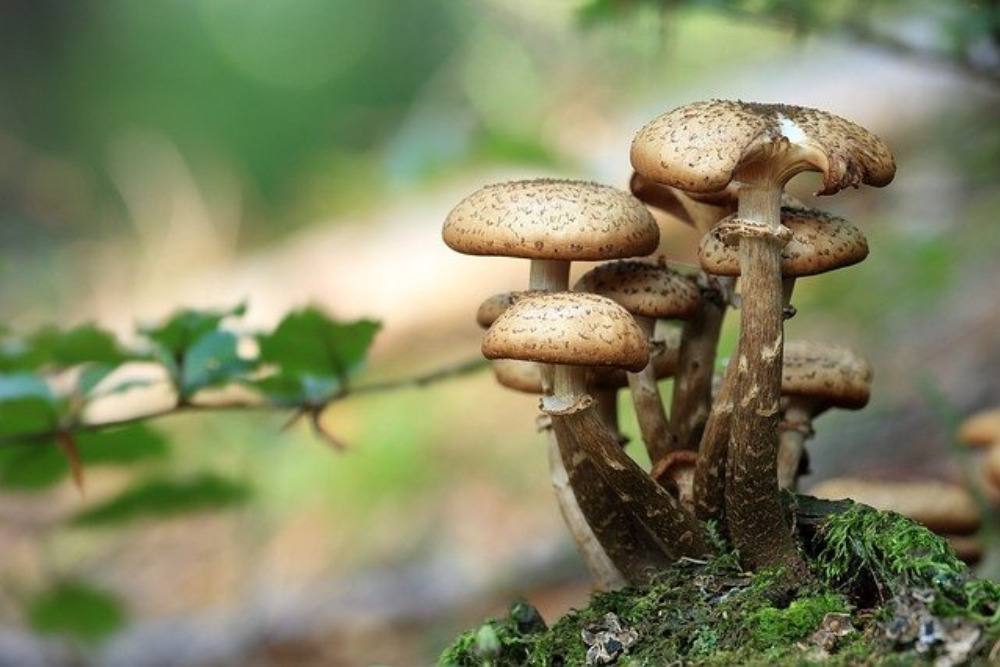
Pests and Diseases
Mushroom cultivation can come with its challenges. Here are some common issues:
- Mold: Excess moisture can lead to mold growth. Ensure proper ventilation and humidity control.
- Insects: Watch for pests like slugs and beetles that may damage your mushrooms.
Environmental Factors
Weather changes can significantly impact mushroom growth. Here’s how to adapt:
- Temperature Fluctuations: Protect your logs from extreme temperatures by placing them in shaded areas.
- Heavy Rain: Excessive rain can lead to soggy logs, so consider covering them during storms.
Benefits of Growing Mushrooms on Trees
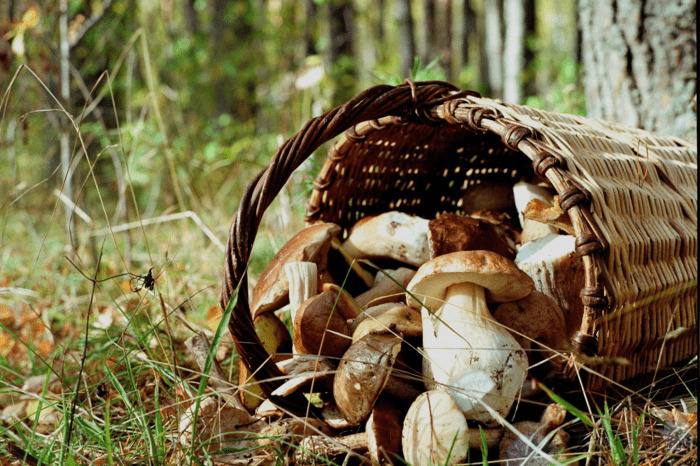
Nutritional Value
Mushrooms are not only delicious but also packed with nutrients. They are a great source of:
- Vitamins: Mushrooms provide essential vitamins like B vitamins and vitamin D.
- Minerals: They are rich in selenium, potassium, and copper.
Ecological Impact
Growing mushrooms on trees contributes positively to the environment. Here are some benefits:
- Biodiversity: Cultivating mushrooms supports a diverse ecosystem by providing habitats for various organisms.
- Soil Health: Mushrooms help improve soil structure and fertility through their decomposition processes.
Recap of Key Points
In this guide, we explored the fascinating world of mushrooms that grow on trees. From understanding their biology to the practical steps of cultivation, you now have a comprehensive overview of how to grow these incredible fungi.
Encouragement for Beginners
Starting your mushroom-growing journey can be both rewarding and enjoyable. Don’t hesitate to experiment and learn as you go. With patience and practice, you’ll soon be harvesting your delicious mushrooms!
By following this guide, you’re on your way to becoming a successful mushroom cultivator. Happy growing!

